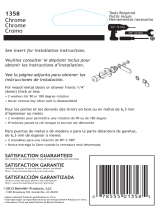
1.5 D 7
1.6 D 7 S
1.7 C 7 LTD
The AKG D 7 is a supercardioid dynamic microphone. It has
been designed specifically as a vocal microphone for rough on-
stage use. The wide frequency response of the D 7 slightly fa-
vors the midfrequency and treble regions to ensures
good intelligibility of speech. The term "supercardioid polar re-
sponse" means that the D 7 is most sensitive to sound arriving
from in front of it, less sensitive to sound arriving from the sides
and rear. This pickup pattern is virtually the same for all fre-
quencies or, in other words, from the lowest to the highest notes
("frequency independent").
A mechanical/pneumatic shock mount on the transducer ele-
ment minimizes handling and cable noise. An integrated wind-
screen reduces pop, wind, and breath noise to a minimum. A
built-in humbucking coil and 80-Hz highpass filter will effec-
tively suppress any other kind of unwanted low-frequency
noise. The filter is permanently active. Therefore, the micro-
phone has no separate on/off switch for the highpass filter.
A rugged front grill made of spring-steel wire mesh that is ex-
tremely resistant to deformation and a sturdy zinc alloy die-cast
body effectively protect the microphone and transducer ele-
ment from damage on stage and on the road.
The D 7 S has the same mechanical, electrical, and acoustic
characteristics as the D 7 and features a noiseless on/off
switch.
The D 7 LTD has the same mechanical, electrical, and acoustic
characteristics as the D 7 and boasts a chrome-plated case to
satisfy specail esthetic requirements.
1 Description
14
D 7/D 7 S/D 7 LTD
BDA D 7_Hex_D030835:BDA_A6_2006 02/16/2009 15:49 Seite 14 (Sc















